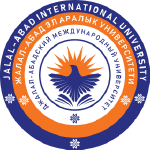Antibiotic Sensitivity and Microbiological Patterns of Diabetic Foot Ulcers
DOI:
https://doi.org/10.63666/ejsmr.1694-9013.1.I.2025.23Keywords:
Antibiotic sensitivity, diabetic foot ulcer, multidrug resistance, microbiological profileAbstract
Introduction: Diabetes mellitus, characterized by chronic hyperglycemia due to defects in insulin secretion, action, or both, is a prevalent metabolic disorder with severe long-term complications, including nephropathy, retinopathy, peripheral neuropathy, and vasculopathy. These conditions predispose patients to diabetic foot ulcers (DFUs), chronic non-healing wounds associated with high risks of infection, amputation, and Charcot joint deformities. DFUs represent a significant cause of hospitalization among diabetic individuals.
Methods: A cross-sectional descriptive study was conducted involving 138 DFU patients across multiple hospitals in the Malakand Division, Pakistan. Data were collected from patient interviews, clinical observations, and hospital records. Of the 138 patients, 13 underwent amputation, and 3 required re-amputation.
Results: The mean age of participants was 45.7 ± 10 years, with a mean diabetes duration of 8.7 ± 3 years and ulceration duration of 4 ± 2 years. The study population comprised 65% males and 45% females. From 150 specimens, 455 aerobic bacteria were isolated (average of 3.03 isolates per specimen), with notable prevalence of multidrug-resistant (MDR) organisms and methicillin-resistant Staphylococcus aureus (MRSA). Among gram-positive aerobes, S. aureus (25.4%) was predominant, while Escherichia coli (16%) led among gram-negative isolates. Gram-positive isolates exhibited resistance to ciprofloxacin (54.5%), erythromycin (53.2%), and clarithromycin (52.56%), but were universally sensitive to vancomycin. Gram-negative isolates showed resistance to ciprofloxacin (75%), cefuroxime (85%), and cefotaxime (54.43%), with imipenem and sulbactam-cefoperazone demonstrating high sensitivity.
Conclusion: DFUs predominantly affect individuals around 50 years of age, with ulceration linked to diabetes duration, treatment adherence, and wound care. Males are more affected than females. Vancomycin exhibited 100% efficacy against gram-positive isolates, while linezolid was effective in 92% of cases, aiding recovery in many patients. The presence of MDR isolates underscores the need for tailored antibiotic therapy.
References
1. American Diabetes Association. Diagnosis and classification of diabetes mellitus. Diabetes Care. 2014;37(Suppl 1):S81-S90. doi:10.2337/dc14-S081
2. Expert Committee on the Diagnosis and Classification of Diabetes Mellitus. Report of the Expert Committee on the Diagnosis and Classification of Diabetes Mellitus. Diabetes Care. 1997;20:1183-1197.
3. Genuth S, Alberti KG, Bennett P, et al. Follow-up report on the diagnosis of diabetes mellitus. Diabetes Care. 2003;26:3160-3167.
4. Cigna E, Fino P, Onesti MG, et al. Diabetic foot infection treatment and care. Int Wound J. 2016;13(2):238-242. doi:10.1111/iwj.12277
5. Gemechu FW, Seemant F, Curley CA. Diabetic foot infections. Am Fam Physician. 2013;88(3):177-184.
6. WebMD. Type 1 diabetes. Available at: [https://www.webmd.com/diabetes/type-1-diabetes](https://www.webmd.com/diabetes/type-1-diabetes)
7. WebMD. Diabetes overview. Available at: [https://www.webmd.com/diabetes/default.htm](https://www.webmd.com/diabetes/default.htm)
8. WebMD. Type 2 diabetes. Available at: [https://www.webmd.com/diabetes/type-2-diabetes](https://www.webmd.com/diabetes/type-2-diabetes)
9. Whale K, Field C, Radhakrishnan R. Lippincott Illustrated Reviews: Pharmacology. 7th ed. Wolters Kluwer; 2018.
10. Miyan Z, Fawwad A, Sabir R, et al. Microbiological pattern of diabetic foot infections at a tertiary care center in a developing country. J Pak Med Assoc. 2017;67(5):665-669.
11. Tiwari S, Pratyush DD, Dwivedi A, et al. Microbiological and clinical characteristics of diabetic foot infections in northern India. J Infect Dev Ctries. 2012;6:329-332.
12. Lister PD, Wolter DJ, Hanson ND. Antibacterial-resistant Pseudomonas aeruginosa: clinical impact and complex regulation of chromosomally encoded resistance mechanisms. Clin Microbiol Rev. 2009;22(4):582-610. doi:10.1128/CMR.00040-09
13. Abd-Al-Hamead H, Al-Metwally RI, Khaled MA, et al. Bacteriological study of diabetic foot infection in Egypt. J Arab Soc Med Res. 2013;8:26-32.
14. Wagner FW Jr. The dysvascular foot: a system for diagnosis and treatment. Foot Ankle. 1981;2(2):64-122. doi:10.1177/107110078100200202
15. Centers for Disease Control and Prevention. National diabetes fact sheet: general information and national estimates on diabetes in the United States, 2003. Atlanta: US CDC; 2003.
16. Rathnayake A, Saboo A, Malabu UH, et al. Lower extremity amputations and long-term outcomes in diabetic foot ulcers: a systematic review. World J Diabetes. 2020;11(9):391-399. doi:10.4239/wjd.v11.i9.391
17. Liu C, Sun H. Risk factors for lower extremity amputation in patients with diabetic foot ulcers: a meta-analysis. PLoS ONE. 2020;15(9):e0239236.
18. Food and Drug Administration (FDA). CFR Title 21, Volume 5, Part 460. 2005.
19. Akhi MT, Ghotaslou R, Asgharzadeh M, et al. Bacterial etiology and antibiotic susceptibility pattern of diabetic foot infections in Tabriz, Iran. GMS Hyg Infect Control. 2015;10:Doc02.
20. Siddiqui MA, Naeem H, Ali MM, et al. Microbiological and antimicrobial pattern of diabetic foot ulcers (DFUs) at a tertiary care center in North East, Punjab. J Pak Med Assoc. 2021;71(6):1566-1569. doi:10.47391/JPMA.1180
21. Anyim O, Okafor C, Young E, et al. Pattern and microbiological characteristics of diabetic foot ulcers in a Nigerian tertiary hospital. Afr Health Sci. 2019;19(1):1617-1627. doi:10.4314/ahs.v19i1.37
22. Rubio JA, Jiménez S, Lázaro-Martínez JL. Mortality in patients with diabetic foot ulcers: causes, risk factors, and their association with evolution and severity of ulcer. J Clin Med. 2020;9(9):3009.
Downloads
Published
Issue
Section
License
Copyright (c) 2025 Eurasian Journal of Scientific and Multidisciplinary Research

This work is licensed under a Creative Commons Attribution-NonCommercial-NoDerivatives 4.0 International License.












